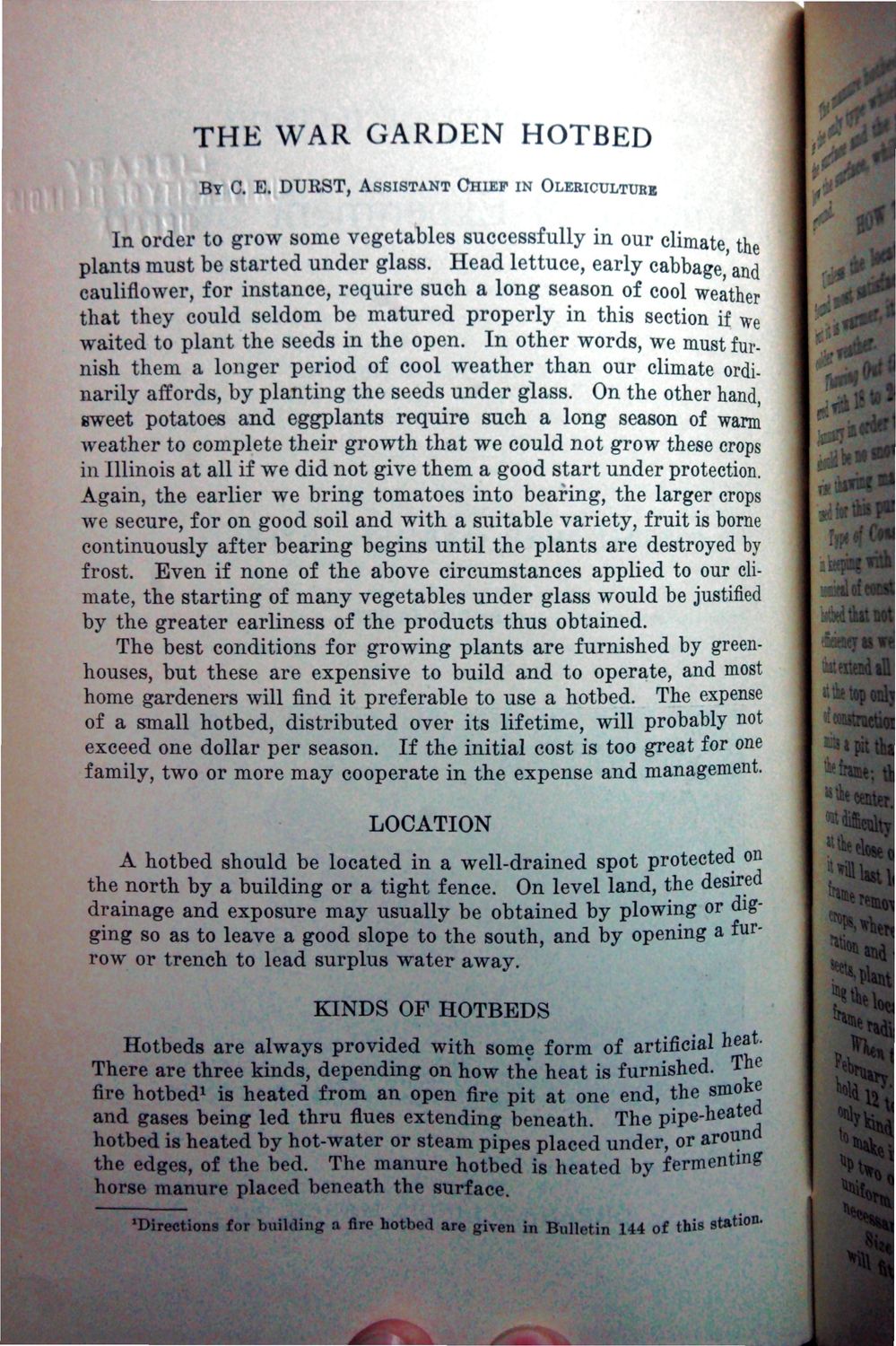| |
| |
Caption: War Publications - WWI Compilation 1923 - Article 45
This is a reduced-resolution page image for fast online browsing.

EXTRACTED TEXT FROM PAGE:
THE WAR GARDEN HOTBED BY C. E. DURST, ASSISTANT CHIEF IN OLERICULTUR* In order to grow some vegetables successfully in our climate the plants must be started under glass. Head lettuce, early cabbage'and cauliflower, for instance, require such a long season of cool weather that they could seldom be matured properly in this section if we waited to plant the seeds in the open. In other words, we must furnish them a longer period of cool weather than our climate ordinarily affords, by planting the seeds under glass. On the other hand, sweet potatoes and eggplants require such a long season of warm weather to complete their growth that we could not grow these crops in Illinois at all if we did not give them a good start under protection. Again, the earlier we bring tomatoes into bearing, the larger crops we secure, for on good soil and with a suitable variety, fruit is borne continuously after bearing begins until the plants are destroyed by frost. Even if none of the above circumstances applied to our climate, the starting of many vegetables under glass would be justified by the greater earliness of the products thus obtained. The best conditions for growing plants are furnished by greenhouses, but these are expensive to build and to operate, and most home gardeners will find it preferable to use a hotbed. The expense of a small hotbed, distributed over its lifetime, will probably not exceed one dollar per season. If the initial cost is too great for one family, two or more may cooperate in the expense and management. LOCATION A hotbed should be located in a well-drained spot protected on the north by a building or a tight fence. On level land, the desired drainage and exposure may usually be obtained by plowing or digging so as to leave a good slope to the south, and by opening a furrow or trench to lead surplus water away. KINDS OF HOTBEDS Hotbeds are always provided with some form of artificial heat. There are three kinds, depending on how the heat is furnished. The 1 fire hotbed is heated from an open fire pit at one end, the smoke and gases being led thru flues extending beneath. The pipe-heatea hotbed is heated by hot-water or steam pipes placed under, or around the edges, of the bed. The manure hotbed is heated by fermenting horse manure placed beneath the surface. d i r e c t i o n s for building n fire hotbed are given in Bulletin 144 of this station-
| |